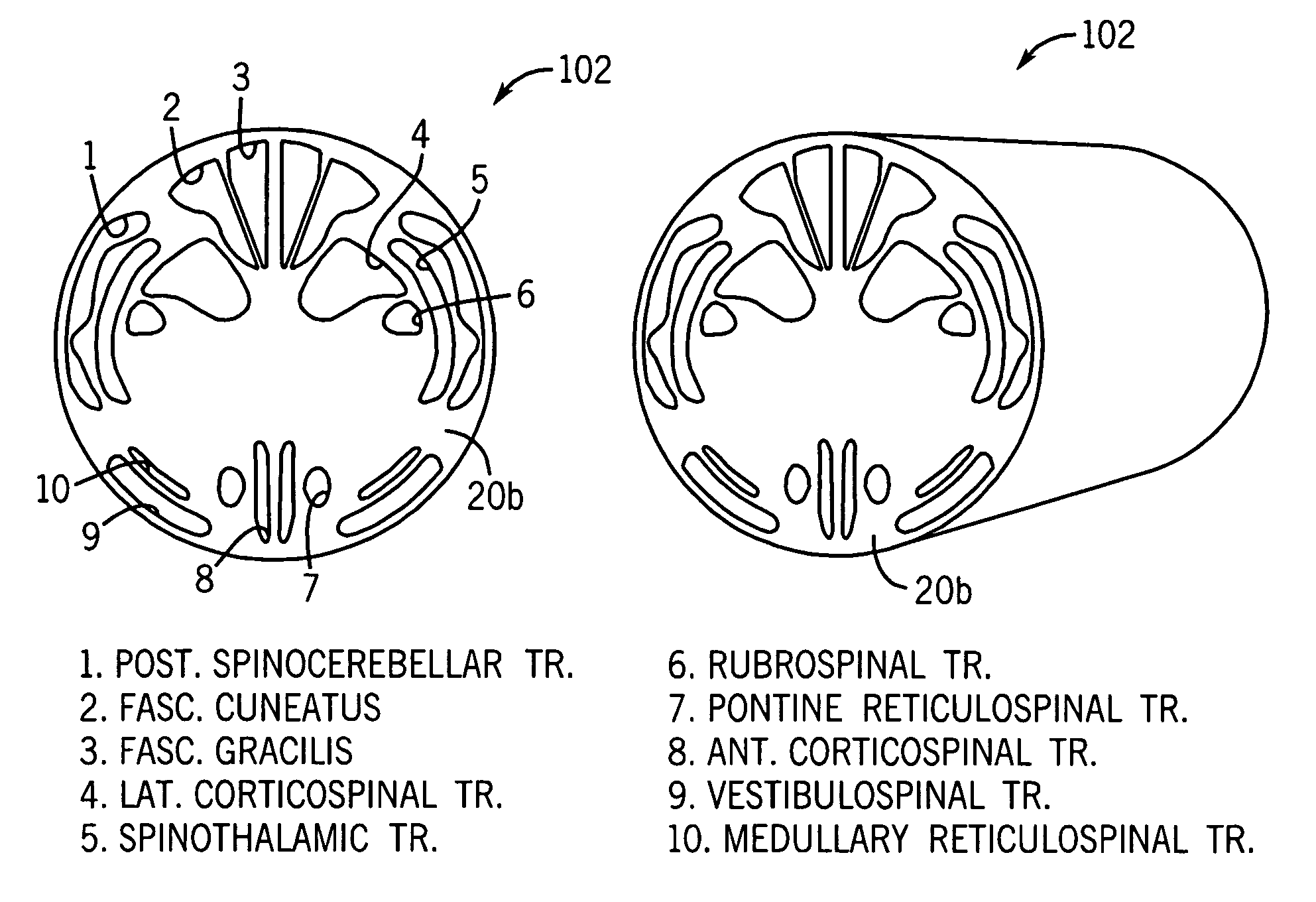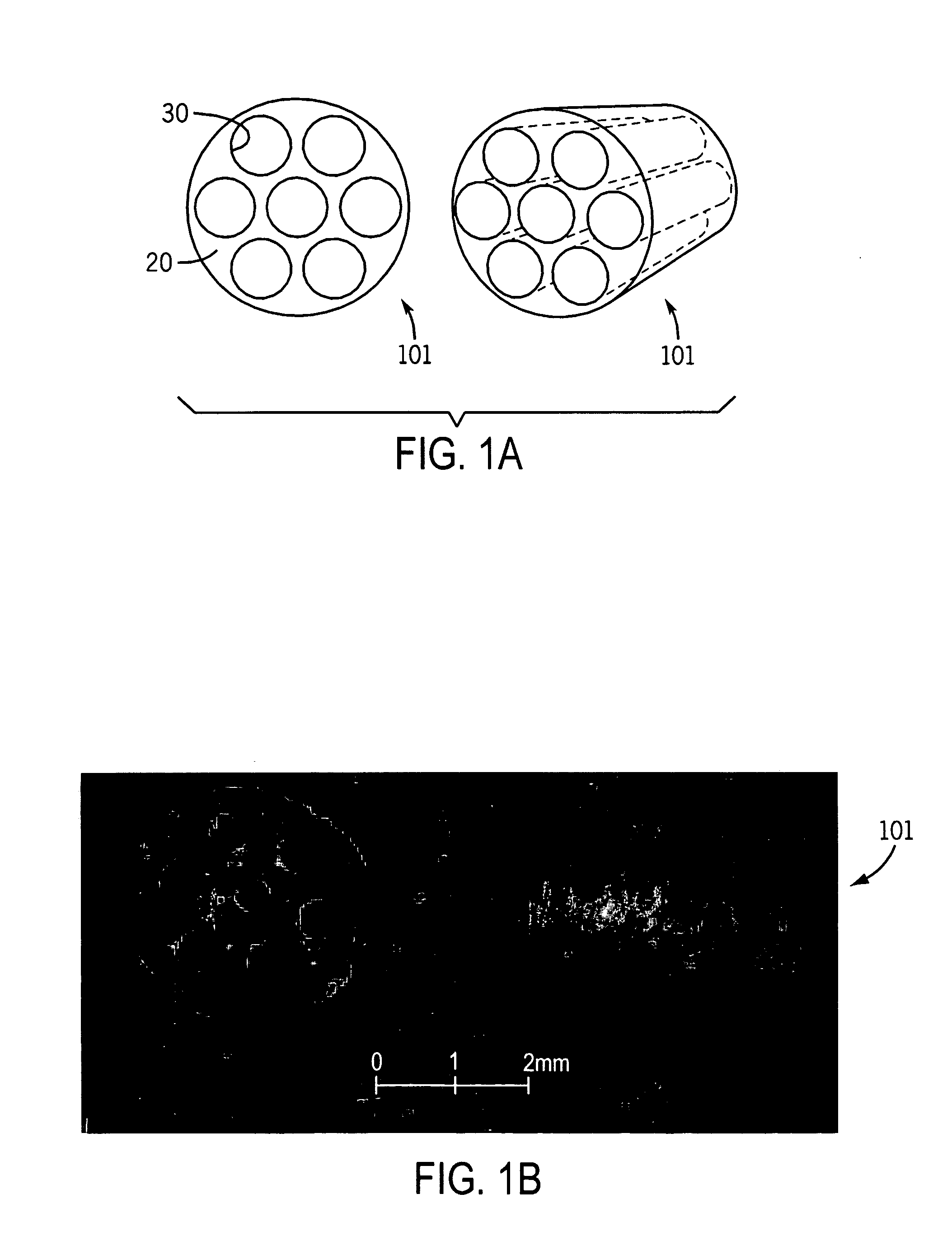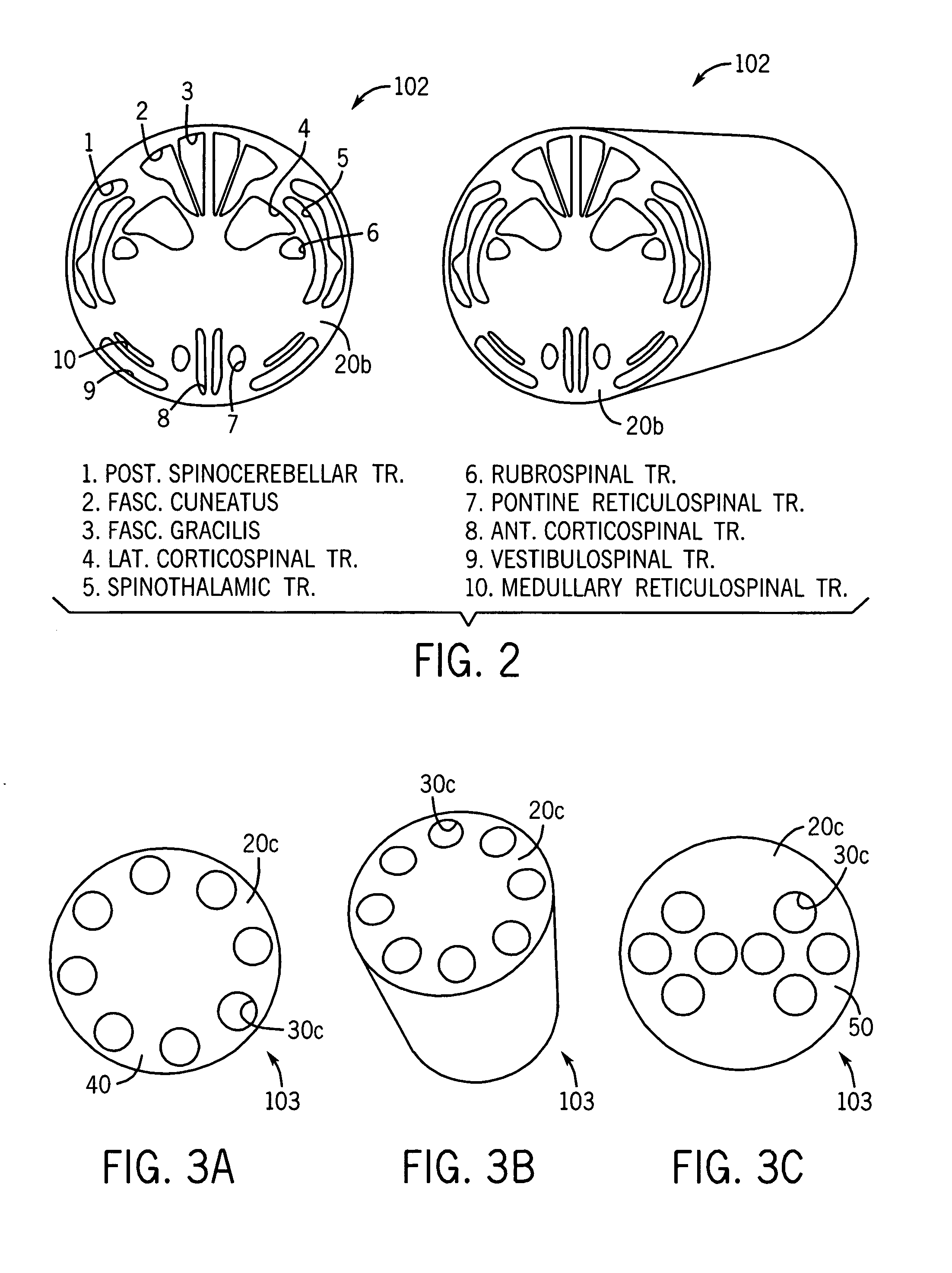Spinal cord surgical implant
a technology of spinal cord and surgical implants, which is applied in the field of biodegradable polymer devices, can solve the problems of inability to stimulate the neuronal axon to regrow, the loss of neurologic function following complete spinal cord injury remains devastating, and the patient who sustains a complete spinal cord injury only has a small chance of recovery
- Summary
- Abstract
- Description
- Claims
- Application Information
AI Technical Summary
Benefits of technology
Problems solved by technology
Method used
Image
Examples
example 1
Multichannel Scaffolds for Axon Regeneration in the Spinal Cord
1A. Introduction
[0042]Biodegradable materials were investigated for their use as conduits for peripheral nerve repair, and these strategies were adapted for use in the injured spinal cord. However, the spinal cord has a highly organized fascicular arrangement, so single-channel guidance conduits may not represent the optimum geometry for guiding axonal regeneration after complete spinal cord injury. Example 1 describes fabrication techniques for constructing biodegradable scaffolds with multiple-channel, complex architectures. These scaffolds were studied for their ability to provide sustained drug delivery in vitro, and axon regeneration in vivo.
1B. Methods
[0043]Scaffolds with parallel-channel architecture were fabricated by injecting a 50% (w / v) solution of poly-(lactic-co-glycolic acid) (PLGA), with a copolymer ratio of 85:15 lactide to glycolide, in dichloromethane (DCM) into a 3-mm diameter Teflon mold fitted with a...
example 2
Release of Chondroitinase ABC from PLGA Microparticles
2A. Introduction
[0046]Chondroitinase ABC (C-ABC) has been investigated for clinical chemonucleolysis of herniated intervertebral discs (see Olmarker et al., Spine, 1996. 21:1952–56), and recently it has been used experimentally for in vitro and in vivo degradation of proteoglycans involved in glial scarring in central (see Bradbury et al., Nature, 2002. 416:636–40) and peripheral nervous system injury (see Zuo et al., Experimental Neurology, 2002.176:221–28). Sustained, local delivery of C-ABC may therefore prove useful for multiple clinical applications. Experiments with release of C-ABC from polymer microparticles were conducted. The activity of C-ABC after release from PLGA (85-15) microparticles was investigated. Activity was examined as a decrease in absorbance, which is calculated by subtracting experimental values from blank microparticle values. The control was calculated by subtracting an aqueous positive control from th...
example 3
3A. Introduction
[0055]Strategies were developed to promote axonal regeneration by manipulating the structural, cellular, and molecular environment of the spinal cord. Computer aided design has been used to facilitate fabrication of grafts from the biodegradable polymer polylactide-glycolic acid. In one form, grafts were 3 millimeters in diameter and 3 millimeters in length and contained seven parallel-aligned channels of 450 micrometers diameter. Primary Schwann cells (120×106 cells / ml. in Matrigel) were microinjected into these channels. It has been demonstrated that cells survive in this environment for 48 hours in vitro. Schwann cell loaded channels were then inserted into a 3 millimeter gap between the transected ends of rat spinal cords at T8–10 level. Cords were harvested at 1, 2 and 3 months after implantation of the grafts and sectioned transverse or longitudinal to the spinal cord axis. Immunostaining against neurofilament light chain demonstrated axonal growth throughout t...
PUM
 Login to View More
Login to View More Abstract
Description
Claims
Application Information
 Login to View More
Login to View More - R&D
- Intellectual Property
- Life Sciences
- Materials
- Tech Scout
- Unparalleled Data Quality
- Higher Quality Content
- 60% Fewer Hallucinations
Browse by: Latest US Patents, China's latest patents, Technical Efficacy Thesaurus, Application Domain, Technology Topic, Popular Technical Reports.
© 2025 PatSnap. All rights reserved.Legal|Privacy policy|Modern Slavery Act Transparency Statement|Sitemap|About US| Contact US: help@patsnap.com



